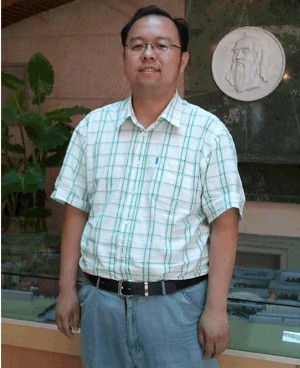more
北外名师
您现在的位置是:SSAT真题
SSAT考试阅读真题及解析(四)
发布时间:2016-12-27 Mount Vesuvius, a volcano located between the ancient Italian cities of Pompeii and Herculaneum, has received much attention because of its frequent and destructive eruptions. The most famous of these eruptions occurred in A. D. 79.The volcano had been inactive for centuries. There was little warning of the coming eruption, although one account unearthed by archaeologists says that a hard rain and a strong wind had disturbed the celestial calm during the preceding night. Early the next morning, the volcano poured a huge river of molten rock down upon Herculaneum, completely burying the city and filling in the harbor with coagulated lava.
Meanwhile, on the other side of the mountain, cinders, stone and ash rained down on Pompeii. Sparks from the burning ash ignited the combustible rooftops quickly. Large portions of the city were destroyed in the conflagration. Fire, however, was not the only cause of destruction. Poisonous sulphuric gases saturated the air. These heavy gases were not buoyant in the atmosphere and therefore sank toward the earth and suffocated people.
Over the years, excavations of Pompeii and Herculaneum have revealed a great deal about the behavior of the volcano. By analyzing data, much as a zoologist dissects a specimen animal, scientist have concluded that the eruption changed large portions of the area's geography. For instance, it turned the Sarno River from its course and raised the level of the beach along the Bay of Naples. Meteorologists studying these events have also concluded that Vesuvius caused a huge tidal wave that affected the world's climate.
In addition to making these investigations, archaeologists have been able to study the skeletons of victims by using distilled water to wash away the volcanic ash. By strengthening the brittle bones with acrylic paint, scientists have been able to examine the skeletons and draw conclusions about the diet and habits of the residents. Finally, the excavations at both Pompeii and Herculaneum have yielded many examples of classical art, such as jewelry made of bronze, which is an alloy of copper and tin.
The eruption of Mount Vesuvius and its tragic consequences have provided us with a wealth of data about the effects that volcanoes can have on the surrounding area. Today volcanologists can locate and predict eruptions, saving lives and preventing the destruction of cities and cultures.
15. Herculaneum and its harbor were buried under ___lava.
A. liquid B. solid C. flowing D. gas E. answer not available
16. The poisonous gases were not ___ in the air.
A. able to float B. visible C. able to evaporate D. invisible E. able to condense
17. Scientists analyzed data about Vesuvius in the same way that a zoologist ___ a specimen.
A. describes in detail B. studies by cutting apart C. photographs D. chart E. answer not available
18. ____have concluded that the volcanic eruption caused a tidal wave.
A. Scientist who study oceans B. Scientist who study atmospheric conditions
C. Scientist who study ash D. Scientist who study animal behavior E. Answer not available in article
19. Scientist have used ___water to wash away volcanic ash from the skeletons of victims.
A. bottled B. volcanic C. purified D. sea E. fountain
答案 15. B 16. A 17. B 18. B 19. C


 揭秘美国大学院校的招生喜好随着暑期的来临,越来越多的家长和学生们开始着手准备201......
揭秘美国大学院校的招生喜好随着暑期的来临,越来越多的家长和学生们开始着手准备201......